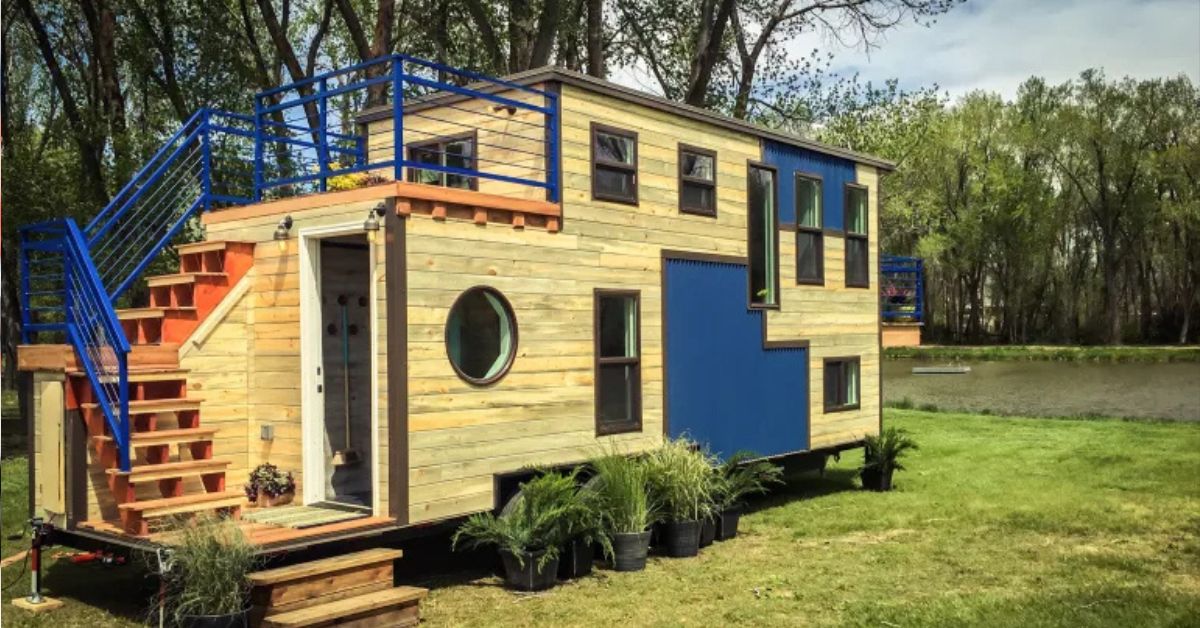Tiny houses represent a shift in thinking about what home means and how space is used. As housing prices rise and people seek more sustainable, intentional lifestyles, building smaller homes has become a trend and a movement. We will explore how tiny house construction reflects a growing desire to live with fewer material possessions and a deeper connection to one’s surroundings. Building a small home isn’t only about reducing square footage—it’s about creating a functional, personalized environment that maximizes every inch and encourages smarter use of resources. For many, it’s a conscious decision to invest in quality over quantity, choosing to live in a way that aligns more closely with their values. Whether constructed on wheels or a permanent foundation, these homes are thoughtfully planned and built to reflect the unique priorities of their owners. The simplicity and clarity of tiny house living often begin during construction, where every design decision holds greater significance.
A Purpose-Driven Approach to Living
Designing for Functionality and Flow
One of the central challenges in tiny house construction is designing a layout that delivers both comfort and efficiency. Without the luxury of excess space, each home part must serve a clear purpose. Builders and designers focus on maximizing vertical space, integrating multifunctional furniture, and creating flexible layouts while maintaining a sense of openness. Even simple features like staircases, lofts, and counters are more important because they impact how the space is used daily. It’s not unusual for one piece of furniture to serve several roles—a bench might double as storage or convert into a sleeping area. Tiny homes require a level of thoughtfulness that extends beyond aesthetics, demanding that every material and every square foot contributes to usability.
For those constructing their own little homes, this often involves months of planning and sketching, with many revisions to get the design right. While some homes are built from custom plans, others use modified versions of existing blueprints to save time and reduce decision fatigue. Materials are chosen for durability, weight, and sustainability, especially if the home will be moved. Thoughtful insulation, window placement, and ventilation design help maintain comfort without relying heavily on energy use. Building a tiny home is as much about crafting a lifestyle as it is about raising walls—it reflects a decision to embrace simplicity and use design to support well-being.
Construction Techniques That Prioritize Efficiency
Tiny house construction uses many of the same tools and methods found in traditional homebuilding but adapted to suit the unique demands of a smaller footprint. Builders often work with lighter framing materials, smaller-scale appliances, and efficient insulation solutions to create homes that are easy to move and maintain. For homes on wheels, weight and balance are especially important, and builders must factor in the trailer’s structural integrity as part of the overall design. These limitations push creativity and encourage innovative building methods that focus on strength, function, and ease of transport. The construction phase is typically faster than a standard home build, though that doesn’t mean it’s rushed.
Much time is spent ensuring every connection, seam, and joint will hold up under use. Because the square footage is limited, attention to detail becomes more noticeable—there’s no hiding poor craftsmanship when the entire home is on display at once. Windows are often more prominent in proportion to the walls to create the illusion of more space, while durable finishes and smart layouts help reduce future repairs and maintenance. Many builders incorporate reclaimed or recycled materials to reduce waste, and the compact nature of tiny houses makes it easier to invest in high-quality finishes and systems. Whether solar power, rainwater collection, or composting toilets, construction choices often reflect the homeowner’s goals for off-grid living or environmental impact.
Legal, Zoning, and Placement Considerations
An essential part of tiny house construction that often goes overlooked is the legal side of placing and living in the structure. Zoning laws, building codes, and land use regulations vary significantly from one area to another, and those differences can affect everything from the size of the home to its mobility. Builders must often coordinate with city or county planning departments to ensure the project aligns with local codes. Some areas are more open to tiny homes, mainly if categorized as accessory dwelling units (ADUs). In contrast, others have stricter requirements for foundation-built homes or structures intended for permanent residence. If the tiny house is mobile, it might fall under RV classifications, which affects insurance, registration, and usage. Navigating these rules is a key step in the construction process, as building a home that can’t legally be lived in creates significant challenges later on. It’s essential to start clearly understanding where the home will be placed, including utilities, water access, and septic solutions. Builders and designers often work closely with homeowners to ensure each detail aligns with the broader legal framework, avoiding delays or conflicts that could stall the build. As more communities embrace flexible housing solutions, the process is becoming smoother, but it still requires careful attention during the planning and construction phases. For added guidance and clarity, it’s helpful to hear from specialists in tiny home construction who understand the regulatory landscape and can help streamline the journey from idea to move-in day.
The Long-Term Value of Thoughtful Construction
While tiny house construction is often driven by a desire to downsize or live more simply, the long-term benefits extend beyond lifestyle. Building a home with such care and attention to detail creates a more durable, efficient, and meaningful living space than many larger homes. The tight construction, smaller systems, and reduced energy needs contribute to lower ongoing costs, while the mobility of some models allows for greater freedom in where and how one lives. These homes are often easier to maintain and require fewer resources to update or repair. But beyond cost and efficiency, many owners report feeling a stronger connection to their home because they had a hand in shaping it from the ground up. The building process fosters a sense of pride and ownership that’s hard to replicate in mass-produced housing. As more people look for ways to live intentionally, tiny house construction offers a practical and rewarding path. It encourages people to think about what they truly need, how they want to use their space, and what kind of environment supports their values. That process is just as necessary as the final result, reminding us that building a home can be as much about creating meaning as it is about creating shelter.
Tiny house construction challenges traditional ideas about what makes a home complete. It asks people to think smaller, design smarter, and live with greater awareness. Whether built on a trailer or a foundation, these compact homes prove that thoughtful planning and efficient building techniques can result in a space that feels expansive in purpose, even if limited in size. Each project reflects a personal story, a unique set of goals, and a commitment to building a life with intention. Everything in the process matters, from material choices to layout design and zoning navigation. For those who leap tiny house construction, the rewards are found in the finished home and the journey of building it. It’s a path defined by resourcefulness, creativity, and clarity—one that inspires new ways of thinking about how we live and what we truly need.
Also Read: How Easy Payment Plans Make Homeownership More Affordable

